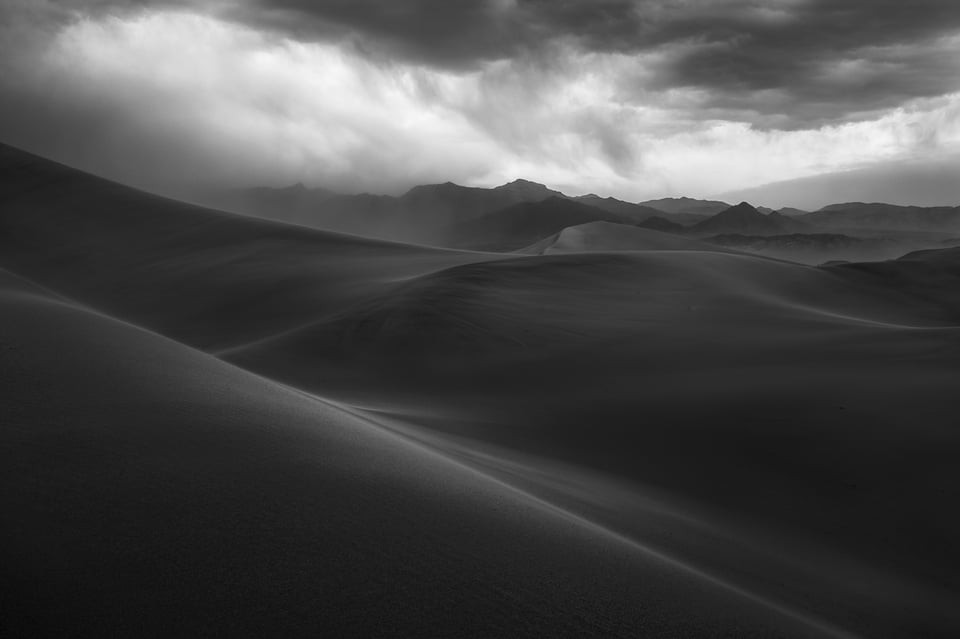In the vast world of online photography content, articles sparking debate often grab the most attention. While controversy isn’t the goal, open and honest discussion is invaluable for growth, especially in photography. Improving your photography is a journey with many paths. Let’s explore several key steps that can significantly elevate your image-making. Consider this an invitation to reflect and refine your photographic approach.
 Portrait-8
Portrait-8
Defining Your Photographic Theme
One of the most crucial initial steps to enhance your photography is to establish a clear theme or project for your work. Specificity is your friend here. Instead of simply deciding to “take pictures of birds,” delve deeper. Creating a theme within a broader subject adds purpose and cohesion to your images, inherently making them more compelling.
For instance, instead of general bird photography, you could focus on documenting bird migration patterns or highlighting the ecological challenges impacting specific bird populations. Such focused themes open up a range of photographic opportunities you might not have considered otherwise. By narrowing your scope, you broaden your creative possibilities, leading to more meaningful and engaging photographs.
 Portrait-1
Portrait-1
A portrait of a coffee worker, demonstrating a themed approach to photography.
Themes in photography are limitless, spanning genres and subjects. Portraiture, for example, can be enriched by focusing on a specific community or profession. The coffee worker portraits, as showcased here, exemplify this approach. The more defined your subject, the more captivating and insightful your photography can become.
 Portrait-4
Portrait-4
A medium shot portrait of a coffee worker in their working environment, captured at eye-level.
Mastering Your Location for Impactful Photos
Location is undeniably paramount – it’s the stage for your photographic story. Thoroughly studying your chosen location is essential. Understand the nuances of light at different times of day, explore various angles, and determine the best lenses to capture its essence. This deep familiarity with your location is key to producing potentially breathtaking images.
Knowing your location inside and out also optimizes your time and efficiency. The more intimately you know your shooting environment, the quicker and more seamlessly you can execute your photographic vision. When considering lenses, align your choices with your theme or project. Your approach will dictate factors like angle of view, focal length, and maximum aperture.
In the context of photographing coffee workers, portrait lenses were chosen to suit a specific style. However, the focus extended beyond mere portraits. Highlighting the surrounding environment and the working conditions became crucial, adding depth and context to the narrative.
 Portrait-3
Portrait-3
Environmental portrait of a coffee worker, emphasizing the surrounding workplace.
The placement of your subject within the environment is another critical consideration. A wide-angle lens might be preferable to showcase the broader context and activity surrounding your subject. Conversely, telephoto lenses can be equally effective, allowing you to isolate and emphasize specific areas within a scene, eliminating potential distractions and clutter.
 Portrait-2
Portrait-2
A closer portrait of a coffee worker, using a wider angle to include some of the environment.
Maximizing Your Photographic Possibilities
It’s a common perception that photography, particularly digital photography, can be an expensive pursuit, accessible primarily to those with significant financial resources. While high-end gear can undoubtedly offer advantages, especially in demanding situations, it’s crucial to remember that it’s not the only determinant of photographic success.
Imagine two skilled photographers tasked with shooting in a remote jungle, but with vastly different equipment and budgets. The photographer with top-of-the-line gear and unlimited resources might be expected to produce technically superior images. However, limitations in gear can actually fuel creativity.
For example, a photographer with a more basic camera and lens kit can still achieve outstanding results by maximizing their knowledge, skill, patience, and even a bit of luck. Understanding your current tools and resources is paramount. If you find yourself at an event surrounded by photographers with professional-grade telephoto lenses, and you lack such equipment, don’t be discouraged.
Lenses like a 105mm f/2.8 or other classic portrait lenses can deliver comparable, or even superior, image quality. Acknowledging your equipment’s limitations can push you to move more, explore different angles, and think outside the box. This forced creativity might lead to more unique and compelling images than those captured with standard setups.
Similarly, in wildlife photography, not owning a super-expensive 600mm f/4 lens shouldn’t deter you. A budget-friendly 200-500mm lens paired with your camera can still capture stunning wildlife moments. While others are preoccupied with setting up complex gear, you can be out in the field, hand-holding your camera and seizing fleeting, unrepeatable moments. Sometimes, the simplest advantage is being proactive – waking up before dawn to capture the magical light of early morning, or staying out late for the golden hour. These are the times when ordinary scenes transform into extraordinary photographs.
 Portrait-5
Portrait-5
Low angle portrait of a coffee worker, emphasizing perspective and environmental context.
Learning from Photographic References and Masters
Studying the work of accomplished photographers and building a mental library of photographic references is fundamental to your growth as a photographer. It’s naive to assume that your photographic ideas are entirely original. Before embarking on a project, research and explore the work of others. References will inevitably emerge, providing inspiration and guidance.
The current standard in photography is remarkably high. Many emerging photographers are producing exceptional work early in their careers. For those with more experience, it often takes years of dedicated practice to reach similar levels of skill. Learning from those who have paved the way is invaluable.
 Portrait-9
Portrait-9
Wide-angle portrait capturing a coffee worker within a broader, contextual scene.
If you are drawn to black and white photography, familiarize yourself with masters like Henri Cartier-Bresson, Fan Ho, and Sebastião Salgado. Analyze their compositions, study how they manipulated light, and understand their unique perspectives. The same principle applies to every genre of photography. Understanding and appreciating the masters in your chosen area will shape your artistic identity and guide your future development. Their work serves as a benchmark, inspiring you to continually strive for improvement.
 Portrait-7
Portrait-7
Close-up portrait of a coffee worker, focusing on details and expression.
Cultivating Humility in Your Photography Journey
Even if you’ve achieved a high level of photographic skill and possess impressive equipment, remember to maintain humility. Pride and arrogance can be detrimental to your growth and connection with your subjects and audience. Ultimately, photography is not about personal aggrandizement, but about contributing something meaningful to the world around you.
Be receptive to feedback and listen to what others have to say. Sometimes, a seemingly minor comment can offer profound insight and become a pivotal turning point in your photographic journey.
 Portrait-10
Portrait-10
Portrait of a coffee worker, utilizing natural light and a shallow depth of field.
Maintaining a Positive Photographic Mood
Approach photography with joy and passion. Look within yourself to guide your next photographic steps, even if you face challenges or lack external support. Don’t allow negativity to cloud your creative vision.
Remember the wisdom in these words:
“Why worry, there should be laughter after pain
There should be sunshine after rain
These things have always been the same
So why worry now”
Mark Knopfler
Embrace the joy of shooting, and happy photographing!
 Portrait-6
Portrait-6
Candid portrait of a coffee worker, capturing a natural and relaxed moment.
